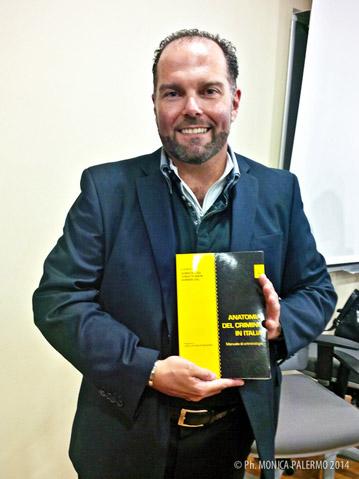The manual was presented at the headquarters of the CBRNe Security and Defense Observatory (OSDIFE), together with the University of Tor Vergata and the University of the Republic of San Marino.
The professor. Roberto Mugavero, president of OSDIFE introduced the workshop, which was followed by the presentation of the volume by the authors. Afterwards, Dr. Carlo Sabatini, magistrate of the court of Rome, the lawyer. Fabio Viglione, criminal lawyer of the Rome Bar. The interventions were moderated by the journalist Grazia Graziadei, correspondent of TG1.
Great participation from the public, made up of representatives of the police, psychologists, psychiatrists, journalists and writers, operators in the social and educational sphere, and enthusiasts of the subject. And the book is aimed precisely at them: to scholars of the sector or to simple enthusiasts, as well as those who are victims of stalking, those who suffer the control of others and manipulation, in particular women, to whom a section is dedicated, which it explains to them how to recognize those who try to manipulate or exploit them.
As Ruben De Luca explained, most of the time the brutality of a crime derives from anger, from a repressed hatred and from wanting to exercise power and control through violence and, hardly, those who have this craving for control within them will be able to change his nature.
 In the first part of the volume, the authors retrace the evolution of criminology by analyzing all the tools that can help the modern criminologist to perform his work in the best possible way: DNA analysis and the "crime scene", the criminological interview, the appraisal and the problem of imputability, the analysis of personality through the psychological profile, graphology, etc.
In the first part of the volume, the authors retrace the evolution of criminology by analyzing all the tools that can help the modern criminologist to perform his work in the best possible way: DNA analysis and the "crime scene", the criminological interview, the appraisal and the problem of imputability, the analysis of personality through the psychological profile, graphology, etc.
The second part of the volume allows the common reader, the student and the scholar, anyone interested for personal or professional reasons to understand the composition and functioning of the criminal universe in Italy, which are the crimes that are perceived to be of greatest "danger. social ", the similarities and differences with crime in Europe and the rest of the world.
The third part is dedicated to some types of crime of international importance: serial killers, mass murders and massacres in schools, suicide terrorism.
The manual therefore presents itself as a complete and innovative tool, attentive to the problems of the XNUMXst century, an obligatory point of reference for anyone who wants to know criminology today and the open challenges for the future of this discipline.
Monica Palermo












